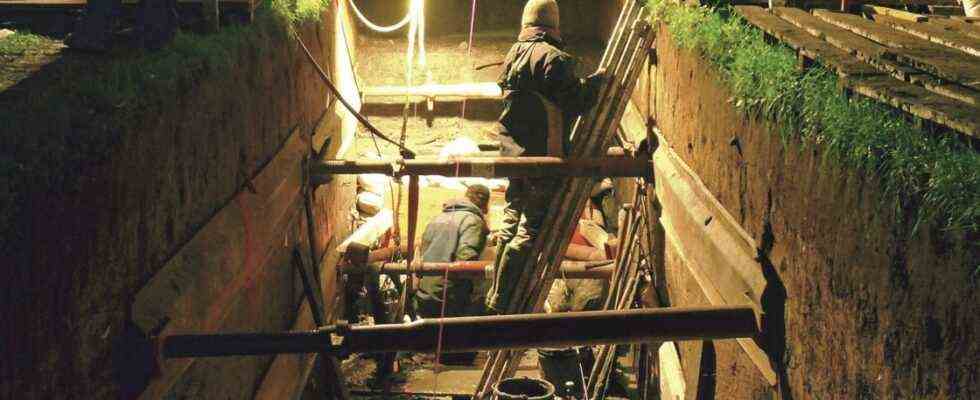Only the most important events in his life made it into the annals of Charlemagne. One of these is the construction of the Fossa Carolina, now known as the Karlsgraben. In the 8th century the emperor gave the order to build a continuous waterway between the Danube, Main and Rhine. The canal was initially intended to connect the Rhine via the Swabian Rezat with the Danube via the Altmühl.
With the shipping route, Charlemagne wanted to strengthen trade in his empire. However, the canal was never completely navigable. Researchers assume that only individual segments could be completed. The swampy soil, continuous rain and political squabbles in the empire made the builders resign after only one year.
The Benediktbeuern monastery.
(Photo: Manfred Neubauer)
On Sunday, those interested can explore the remains of the Karlsgraben: at the nationwide Open Monument Day, the State Office for Monument Preservation offers guided tours along the canal. The archaeologist Stefanie Berg takes visitors on a walk on the Karlsgraben and reports on the latest research results.
At Graben, a district in Treuchtlingen in Central Franconia, scientists looked for traces of the canal until 2018 as part of a large-scale research project. What Charlemagne planned in the Middle Ages was only achieved by King Ludwig I with his Main-Danube Canal – around a thousand years later.
As the oldest canal structure in Bavaria, the emperor’s dreamed of prestige project has gone down in history. Today it is considered to be one of the largest ground monuments in southern Germany. Archaeologist Berg knows why. “Parts of the canal are still visible above ground, and the up to twelve-meter-high walls made of excavated material can even be walked on,” she explains. It is extremely rare that such a building project from the Middle Ages has been passed down so well. “We can say exactly that construction 792 began and was discontinued a year later. The canal was probably one of the highlights in Charlemagne’s life, otherwise the construction would not have made it into the annals.”
More than 1000 people had to toil on the canal at that time. A section of 500 meters still carries water today. Although the water was supposed to flow only half a meter high and about four meters wide, the canal was still an architectural masterpiece. Scientists can even date back almost to the month when the oaks were felled for the timber in the canal. State-of-the-art research methods make this possible. “The fact that we have such detailed information about the construction continues to fascinate visitors,” says Berg.
In addition to the walks along the Karlsgraben, there are guided tours and events throughout Bavaria on Sundays. At more than 600 locations, visitors can get an idea of the most important monuments in Bavaria. Last year, Monument Day – as always on the second weekend in September – took place purely digitally due to corona. This year there will be a mix of digital offers and on-site programs. In a virtual 3-D tour, for example, the Alte Schäfflerei of the Fraunhofer Center in Benediktbeuern Abbey can be explored, while digital tours with various topics are offered in the building archive in Thierhaupten.
There are also digital programs for children. Little fans of art history can take part in a digital workshop and try their hand at being an art historian. The Gothic glass art of Augsburg Cathedral is then explored by zooming in. All events of the Monument Day this year have the motto “Being and appearances in history, architecture and monument preservation”.
The royal villa in Regensburg is one of the attractions on the Open Monument Day.
(Photo: Michael Forstner)
In Regensburg, visitors can visit the royal villa in the east of the city. At least from the outside, interested parties are not allowed in due to the corona. But the Villapark also looks a lot outside: King Maximilian II of Bavaria once set up a summer residence here, and it looks accordingly stately.
In contrast, a monument on the banks of the Danube in Regensburg is initially inconspicuous, which is mostly hidden from the eyes of tourists, but can be viewed on Sunday: the Jewish ritual bath on the Holzlände. At first glance, the house under which the plunge pool is located doesn’t look like a monument. It is inhabited. Among them, however, is the ritual bath from around 1800, an important testimony to Jewish life in Regensburg.
Registrations are especially necessary for the guided tours, information about the online events at www.tag-des-offenen-denkmals.de.

